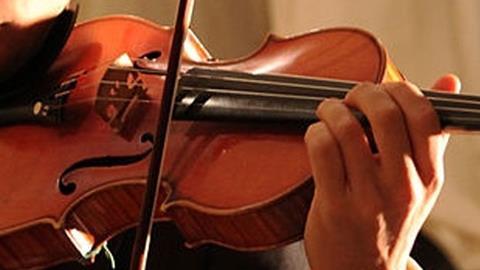Advice on how to shift smoothly and cleanly from The Strad archives

Explore more Technique like this in The Strad Playing Hub
I have always maintained that the acquirement of a good or a bad shift is largely a matter of mental outlook rather than one of mechanics; a psychological exercise rather than a technical one. I am equally convinced that many a faulty shift owes its origin to the fact that the player has been far too conscious of his hands and too little concerned with the effect that he wishes to produce.
Jeffrey Pulver, The Strad, April 1931
The best approach to shifting is a musical one, where you simply decide that there is no such thing as a shift. When you stop thinking about shifting, the immediate improvement in ease and accuracy is easy to feel and hear; and the correct timing occurs naturally.
The time for the shift must be taken from the note before the shift. As long as the arrival note is exactly in time, the note before the shift will not sound as if it has been shortened. While a perception of there being no such thing as a shift is useful, you still need to be familiar with the geography of the fingerboard.
Simon Fischer, The Strad, January 2006
The only way in which a position change, a shift, can take place is by our reducing the finger pressure sufficiently to allow the hand to move reasonably easily. This slight pressure presents virtually no problem in an ascending shift between the 1st and 3rd positions...The moving of the point of counterpressure in advance of the actual shift we might agree to call the ‘Thumb-Preparatory Movement’. Executed in its fullest form, it means that the thumb, hand and forearm, in fact everything but the tip of the just playing finger, move into the new position BEFORE the actual shifting of the finger takes place. In this way the final, swift movement has to be made ONLY by the finger, and only the finger has to make that sudden, instant stop which is now very much easier as the finger has a definite place to go.
Walter Jorysz, The Strad, May 1963
When we wish to shift to a position not located on the second bone of the thumb, say from the first to the fourth or a higher position, we must throw the thumb back under the neck towards the scroll, until the neck rests on that portion of the thumb used for the required position. This can be done either whilst, or before moving the hand; the former is preferable.
Andre La Tarche, The Strad, March 1894
Among a list of the requirements of a good shifting technique, we find that the finger pressure must be almost non-existent during the actual shift. To the player who has been used to hammering the fingerboard with the fingers, this will be most difficult to achieve. This is especially so in light of the fact that the shift is not usually learned as a technical entity, and is allowed to develop merely as a position changing.
A.A.Babynchuk, The Strad, October 1956
On the double bass the shift creates some of the greatest problems both in terms of execution and musical style. The shift, however, embodies the innate nature of singing and when utilised properly provides a great opportunity for expression. In melodic passages, lyrical fingerings should be used. The difference between shifting within a slur or shifting at a bow change is musically and tonally very noticeable, especially on the bass.
Jeff Bradetich, The Strad, September 1996
To subscribe to The Strad click here
Read: How to shift smoothly and cleanly by cellist Jeffrey Solow
Watch: Victoria Chiang demonstrates shifting exercises for viola
Read: Intermediary notes are unnecessary for shifting
Discover more Technique like this in The Strad Playing Hub











































No comments yet